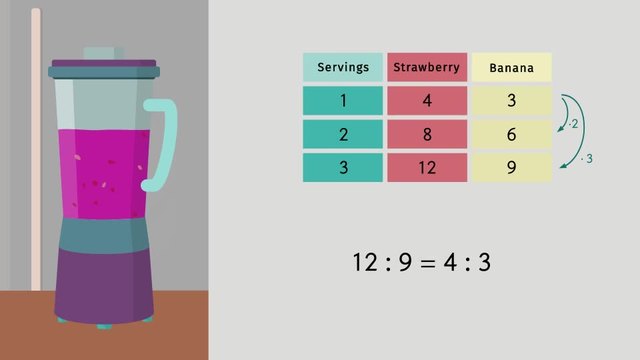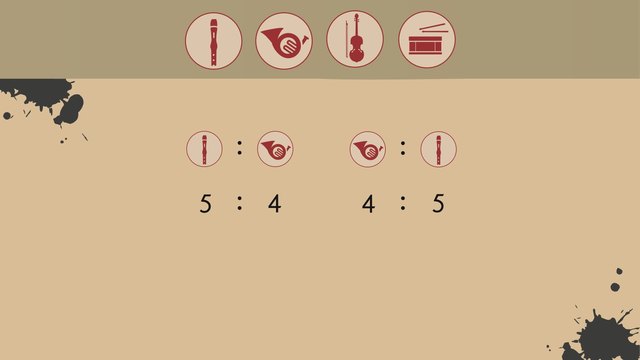Conditions for a Unique Triangle
Basics on the topic Conditions for a Unique Triangle
Conditions for a Unique Triangle – Definition
Triangles are fundamental shapes in mathematics and the world around us, from bridges' structure to sails' design. A unique triangle can only be formed one specific way given a set of conditions. However, not all sets of conditions will result in a triangle, and sometimes, they might lead to more than one triangle or no triangle at all.
Unique Triangle: A triangle that can be formed in only one specific way given a set of conditions, such as specific side lengths or angles.
Understanding Conditions for Triangles – Explanation
For a triangle to be formed, certain conditions relating to its sides and angles must be met. These conditions help us determine whether a triangle is unique, non-unique, or impossible to form. Here's an overview:
| Condition Type | Description | Example |
|---|---|---|
| Unique | Only one triangle can be formed with the given conditions. | Three side lengths (SSS), two sides and the angle between them (SAS), or two angles and a side (AAS or ASA). |
| Non-Unique | More than one triangle may be formed with the given conditions. | Two sides and a non-included angle (SSA). |
| Impossible | It's not possible to form a triangle with the given conditions. | Angles sum more than $180^\circ$ or side lengths that don't connect. |
The Triangle Inequality Theorem states that the sum of the lengths of any two sides of a triangle must be greater than the length of the third side. This theorem ensures that a triangle can be formed with a given set of side lengths. For example, if you have sides of lengths 3, 4, and 5, the sum of any two sides will always be greater than the third, making a triangle possible.
The Angle Sum Theorem of Triangles is a fundamental principle in geometry, stating that the sum of the interior angles of any triangle is always equal to 180 degrees. This property highlights the consistent geometric relationship within triangles, regardless of their shape or size. For instance, in a triangle with angles measuring 60 degrees, 70 degrees, and 50 degrees, their total will always add up to 180 degrees, illustrating this universal characteristic of triangles.
Conditions for a Unique Triangle – Practice
Consider sides of 8 cm, 9 cm, and 17 cm. Can these lengths form a triangle?
Apply the Triangle Inequality Theorem: This theorem states that for any triangle, the sum of the lengths of any two sides must be greater than the length of the remaining side.
- Sum of the two smaller sides: 8 cm + 9 cm = 17 cm.
- This sum is equal to the length of the third side, which does not satisfy the strict inequality required for a triangle to exist.
With sides of 8 cm, 9 cm, and 17 cm, a triangle cannot be formed because the conditions violate the Triangle Inequality Theorem, resulting in a straight line rather than a triangle.
Given two angles of 60° and 30°, and a side length of 4 cm not included between these angles, can a unique triangle be determined?
Calculate the third angle using the Angle Sum Theorem of Triangles: The sum of angles in any triangle is 180°. * Given angles: 60° and 30°. The sum is 90°. * The third angle must be 90° to make the total 180°.
Check for Unique Triangle Formation: With two angles and a side given (AAS condition), a unique triangle can be determined because the third angle is fixed, and the side's length is known.
A unique triangle can indeed be determined with two angles of 60° and 30° and a side length of 4 cm, satisfying the AAS condition.
Try some on your own!
Conditions for a Unique Triangle – Summary
Key Learnings From This Text:
- Unique Triangles: These are created when we have clear conditions like SSS, SAS, or AAS/ASA. They make sure we can only make one specific triangle, which is really important for jobs that need exact shapes, like building design or making machines.
- Non-Unique and Impossible Triangles: These types of triangles show us what can and can't be done in geometry. Non-unique triangles (with the SSA condition) tell us that sometimes we need more info to avoid confusion. Impossible triangles don't follow the rules like the Triangle Inequality Theorem or the Angle Sum Property, showing us the limits of what shapes we can make.
- Knowing about these triangle rules helps us in real life, not just in school. It's important for careers in engineering, building, and technology, helping us solve problems and make plans that involve shapes.
Conditions for a Unique Triangle – Frequently Asked Questions
Transcript Conditions for a Unique Triangle
Penny wants to build a new garden bed in the shape of a triangle but needs to figure out what size to make it. If this is going to be a special one-of-a-kind garden bed, we must learn the conditions for a unique triangle. Let's first review what we already know about constructing triangles. The angles in the triangle must add to one hundred eighty degrees. The sum of the two shortest side lengths must be greater than the length of the longest side. If any of these conditions are not met, our triangle would be considered impossible. Penny knows the angle measurements of her triangular area, but not the side lengths. A non-unique triangle occurs when only the angle measurements are given. Non-unique triangles have infinite triangular possibilities. A triangle is unique when only the side lengths are known, and the angles still must add to one hundred eighty. Unique triangles are one of a kind, and only one triangle will exist under these conditions. Let's see if we can classify some triangles using the labels 'non-unique', 'unique', or 'impossible'. For the first triangle, what would we classify this triangle as? The sum of the angles is equal to one hundred eighty degrees, making this triangle possible. Because we do not know the side lengths, this is a 'non-unique triangle' because there are endless options for size. In the next triangle, we are given the side lengths of five feet, seven feet, and nine feet how would we classify this triangle? The rule is that the two shorter sides must add to more than the longest side. The sum of five and seven is twelve, which is greater than nine. This triangle is possible and also unique because when we know the lengths of the sides, only one triangle can be constructed. In the third triangle, the angle measurements of ninety degrees, ten degrees, and seventy degrees are given. How would we use these measurements to determine the triangle classification? The sum of these angles is one hundred seventy degrees so this triangle is impossible. Back to Penny and her triangular-shaped garden bed, where she only knows the angle measurements of thirty-seven degrees, fifty-three degrees, and ninety degrees. We know the triangle is possible since the sum of the angles is one hundred eighty. Is the triangle unique, or non-unique? This triangular area is non-unique and she has unlimited options for how big the triangle can be with the given angle measurements. Penny finds some wood planks for the sides with lengths of three feet, four feet, and five feet. This triangle is possible, the sum of three and four is greater than five. Is this triangle unique or non-unique? It is unique because only one triangle can be formed with these side lengths. Penny has found the measurements for her unique triangular-shaped garden that is one-of-a-kind. Let's summarize! Unique triangles are formed when we know the side lengths, and the angles add up to one hundred eighty. Non-unique triangles are formed when we only know the angle measurements, and they add up to one hundred eighty. Remember, if either of the conditions is false, then the triangle is impossible! "Wow Luis, I guess you were prepared for a non-unique triangular garden bed!"
Conditions for a Unique Triangle exercise
-
Describe the triangle.
HintsIf a triangle is unique:
- the sum of the angles are $180^\circ$
- the sum of the two shorter sides > longest side.
The triangle has angles of $30^\circ$, $110^\circ$ and $40^\circ$.
Do they add up to $180^\circ$?
Are the two shorter sides greater than the longest side?
The triangle has sides of $5cm$, $7cm$ and $9cm$.
Are the two shorter sides greater than the longest side?
SolutionUnique
The triangle has angles $110^\circ$ + $40^\circ$ + $30^\circ$ = $180^\circ$
Also sides, $7$ + $5$ > $9$
If a triangle is unique:
- the sum of the angles is $180^\circ$
- the sum of the two shorter sides > longest side.
-
Which triangles are considered unique triangles?
HintsFor a triangle to be unique, the sum of the two smaller sides must be greater than the longest side.
The example here is a unique triangle.
A unique triangle.
For example, sides $2$ cm, $8$ cm and $9$ cm
$2$ + $8$ > $9$
There are $3$ correct answers.
SolutionSides $4$ cm, $8$ cm and $9$ cm
$4 + 8 > 9$
Sides $7$ cm, $8$cm and $11$ cm
$7 + 8 > 11$
Sides $6$ cm, $7$ cm and $8$ cm
$6 + 7 > 8$
In order to be unique, the two shorter sides > longest side.
-
Can these form a triangle?
HintsThe sum of the angles in a triangle must = $180^\circ$
These angles form a triangle.
Sum = $180^\circ$
There are $3$ correct answers.
SolutionAngles $45^\circ$, $65^\circ$ and $70^\circ$ = $180^\circ$
Angles $37^\circ$, $41^\circ$ and $102^\circ$ = $180^\circ$
Angles $63^\circ$, $61^\circ$ and $56^\circ$ = $180^\circ$
These form a triangle because the sum of the angles is $180$.
-
What makes this triangle unique?
HintsA triangle is unique if the sum of the two shorter sides are greater than the longest side.
If the two shorter sides are smaller than the longest side, the triangle cannot be formed.
Solution$a + b > c$
The sum of the two shorter sides is greater than the longest side, or a triangle cannot be formed, as the two shorter sides will not meet.
-
Classify the triangles.
HintsA unique triangle - the sum of the smaller sides is greater than the longer side.
The diagram shows why this condition has to be met.
A unique triangle has the sum of its angles = $180^\circ$
A triangle is non-unique if the angle sum is $180^\circ$ but there are no sides given.
It forms a triangle but it could be different sizes.
SolutionAngles of the triangle are $60^\circ$, $20^\circ$ and $80^\circ$ - Impossible. (Sum of angles = $160^\circ$)
Angles of the triangle are $90^\circ$, $30^\circ$ and $60^\circ$ - Non-unique.
Sides of the triangle are $5$cm, $7$cm and $10$cm - Unique.
Sides of the triangle are $8$cm, $3$cm and $14$cm - Impossible. ($8 + 3 < 14$)
.
-
Find the value of $w$ using your knowledge of the angles of traingles.
HintsThe sum of the angles in a triangle = $180^\circ$.
Form an equation using this fact.
$6w + 2w + w = 180$
Continue to solve this.
Solution$w = 20$
Form an equation:
$6w + 2w + w = 180$
$9w = 180$
Divide both sides by $9$
$w = \frac{180}{9}$
$w = 20$





















